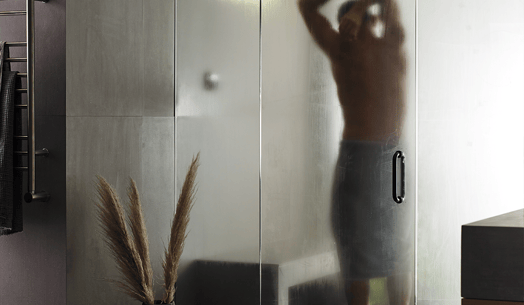6 Tips for Keeping Steam In and Letting Steam Out
Curious about best practices for using and ventilating your steam shower? It's a question MrSteam customers ask us regularly. The answer has two parts: keeping steam contained during your showervand properly ventilating the steam shower afterward.
Let's explore the ins and outs of steam in more detail. Follow these tips for keeping steam inside your shower:
1. Properly size your generator.
Steam retention starts with having a steam generator properly sized to fill your shower.
Factors such as building materials, ceiling height and volume all need to be considered when sizing a steam generator. If the steam shower generator is too small, it will yield only cool mist, rather than relaxing heat. Too large, and it will waste energy. Goldilocks said it best, and we’ll paraphrase: Get a steam generator that is sized "just right.”
Also ensure that no heating, venting or air conditioning devices are installed inside the steam room.
>> Use our virtual spa to size your residential steam room
>> See Tile Steam Shower? Marble Steam Shower? What's the Difference?
2. Insulate your steam shower.
Once you have a properly-sized steam bath generator, it's important to contain that warm, luxurious steam in your shower by sealing shower windows and doors. Although shower doors need not be air-tight (a little bit of air will help you see the steam form), they should be water-tight.
Install waterproof glass panels with a thick bead of silicone caulk on shower curbs and side rails, as well as between any joints where the frames meet the walls.
3. Install double-paned exterior windows.
If you have an exterior window in your steam shower, ensure that it doesn’t allow any of that steamy vapor to escape outdoors or penetrate the window itself.
For maximum protection, install an outdoor window composed of double-paned (and increasingly triple glazing/pane) glass to limit heat transfer into and outside of your bathroom.

After your steam journey ends, it’s important to properly vent the room to remove the moisture. It can also help prevent mildew and defog your bathroom mirror so you don’t have to wait to shave or put makeup on.
Here are a few tips for venting a steam shower:
4. Use an exhaust fan.
In a regular bathroom, an exhaust fan helps vent stale air outside the home.
This same principle applies to a steam shower bathroom—in fact, a standard bathroom exhaust fan will do the trick. Installed outside the steam shower enclosure, steam shower exhaust fans will safely remove moist warm air from the room.
Reminder: No heating, venting or air conditioning devices should be installed inside the steam room!
5. Include louvers to vent the shower.
Louvers are angled shutters that can let air in and out of an enclosure when opened. Including louvers in your steam room will help some of the steam vent out into the bathroom’s exhaust fan.
Another option is to install a window transom, which is a horizontal window that sits above a door, often hinged to allow air movement and encourage ventilation in a steam shower.
>> Check out these venting ideas on Houz
6. Dissipate steam with cold water.
Turning on the cold water in your shower for 15-30 seconds is a great trick for ventilating a steam shower. The rush of cold into the room will help condense and dissipate the remaining steam in the enclosure before opening the door.
>> See Debunking the Myths About Home Steam Showers
Correctly managing the intake and ventilation of steam in your shower will help you to fully enjoy the health and wellness benefits of steam.
The Benefits of Steam Shower Ventilation Systems
Installing a ceiling-mounted exhaust fan in a steam shower provides several important benefits that improve the performance and longevity of the steam shower system.
By actively ventilating the steam shower enclosure, the exhaust fan improves airflow and reduces humidity buildup. The improved airflow from the vapor-proof exhaust fan helps regulate humidity and temperature, minimizing condensation on surfaces, and preventing issues like mold, mildew, and moisture damage over time.
The constant circulation of air from the ceiling-mounted exhaust fan also helps remove odors and brings in fresh, dry air, improving overall air quality within the steam shower. With proper ventilation taking away hot, moist air, the tiles, glass, fixtures, and surfaces are protected from excessive condensation dripping and damage.
Ultimately, an exhaust fan is a smart addition when remodeling an existing bathroom or installing a new spa-like steam shower instead of a traditional shower. It optimizes the steamy environment by regulating humidity, removing odors, improving airflow and ventilation and extending the life of the steam shower components. The fan helps maintain an enjoyable and healthy steam shower experience.

 SEARCH
SEARCH
 FIND A DEALER
FIND A DEALER








